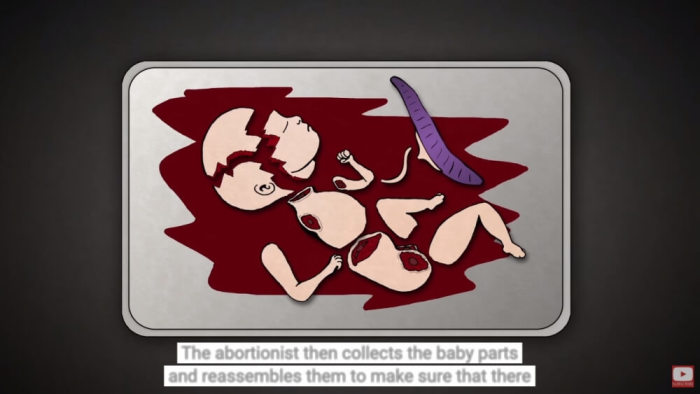Man Who Performed 1,200 Abortions Reveals Why Abortion Is Harmful for Women in 4 New Videos

Induced abortions, which are the most prevalent late-term abortion procedure since they are performed from 25 weeks of gestation to term, usually takes three or four days to complete because the babies are so large and even capable of living outside the mother's womb if the mother were to give birth prematurely.
Levatino explains that on the first day, the abortionist injects a drug called Digoxin into the baby's head, torso or heart to cause fatal cardiac arrest.
"The baby will feel it," Levatino asserted. "Babies at this stage feel pain."
After the Digoxin kills the baby, the abortionist uses laminaria to dilate the cervix to prepare for the delivery of a stillborn baby. The woman is left to carry her dead baby around for about two to four days until her cervix is dilated enough.
When the cervix is dilated enough, the women either returns to the clinic to deliver her dead baby or delivers her dead child elsewhere if she is not able to make it to the clinic. If the baby does not come out whole, an abortionist will use the D&E procedure to dig out the rest of the remaining body parts.
An aspiration suction abortion is only used during the first trimester. The abortionist dilates the mother's cervix so that he or she can use a suction catheter to "vacuum" the unborn baby out of the womb.
Although aspiration abortion might seem less barbaric than induced abortions or D&E abortions, the procedure still poses health risks to the mother since the abortionist still needs to scrape the uterus to make sure all the baby's body parts are removed. The procedure still poses risks of infection, damage to intestines, bladder, and blood vessels.
According to the website, one out of 48 who mothers who have the procedure run the risk of hemorrhaging and one in 59 get infections.
Medical abortions, which are also called chemical abortions, are abortion procedures in which the mother takes two different pills in order to cause the death and delivery of her child. The procedures are performed up to the ninth week of pregnancy.
The mother first takes the pill known as RU-486 in the abortion clinic or doctor's office. Levatino says the pill blocks a hormone produced by the mother called Progesterone, which stabilizes the lining of the uterus. The pill causes the mother's uterus to break down to cut off blood and nourishment and cause the baby to die. One to two days later, the mother takes a pill called Misoprostol, which causes contractions and blood flow to push the baby out of the womb.
The website explains that even after the baby has been pushed out, the mother can often suffer from excessive bleeding for weeks. Excessive bleeding usually lasts nine to 16 days.
One out of 12 mothers who undergo medical abortions suffer from excessive bleeding. Five to 8 percent of women who get medical abortions end up needing surgery to stop the bleeding or complete the abortion.
In her webcast, Rose said she is hopeful that the website and videos will serve as a catalyst that changes the conversation on abortion in America by showing Americans what is occurring when mothers abort their children.
Just as images in the past have inspired social reformation around issues like child labor, slavery and civil rights, Live Action's goal is that these videos will cause a social reformation calling on an end to abortion.
"We strongly believe that showing the victim and telling the story of the victim is the way to create change and create defenders for those victims to inspire the change that is necessary," Rose said. "You can look at the history of social reform, as well as studies that have been done. I think it is most compelling to look at history and see how images have been the thing to make movements."




























